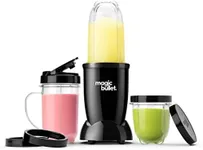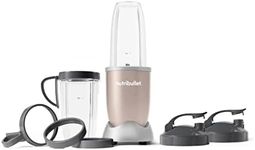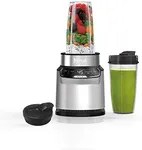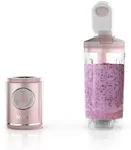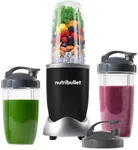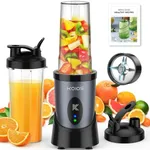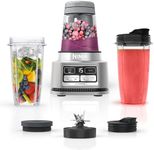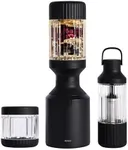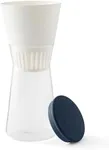Buying Guide for the Best Personal Size Blenders
Choosing the right personal-size blender can make a big difference in your daily routine, whether you're making smoothies, protein shakes, or other blended drinks. The key is to find a blender that fits your specific needs and lifestyle. Here are some important specifications to consider when selecting a personal-size blender, along with explanations to help you understand what to look for and how to choose the best one for you.Power (Wattage)Power, measured in watts, determines how effectively a blender can crush and blend ingredients. Higher wattage means more power, which is important for blending tougher ingredients like ice, frozen fruits, and fibrous vegetables. Blenders with lower wattage (200-300 watts) are suitable for softer ingredients and simple smoothies. Medium wattage (300-600 watts) can handle a wider range of ingredients, while high wattage (600+ watts) is ideal for those who want to blend hard ingredients quickly and smoothly. Consider your typical use: if you often blend hard or frozen items, opt for higher wattage.
CapacityCapacity refers to the volume of the blending container, usually measured in ounces or milliliters. Personal blenders typically range from 12 to 32 ounces. Smaller capacities (12-16 ounces) are great for single servings and portability, while larger capacities (20-32 ounces) are better for making multiple servings or larger portions. Think about how much you usually blend at once and whether you need to take your blender on the go.
Blade Material and DesignBlades are crucial for effective blending. Most blender blades are made from stainless steel, which is durable and resistant to rust. The design of the blades also matters; some are better for crushing ice, while others are designed for pureeing or chopping. Look for blenders with strong, sharp blades if you plan to blend tough ingredients. If you mostly make smoothies with soft fruits, a standard blade design will suffice.
Speed SettingsSpeed settings allow you to control the blending process. Some personal blenders have a single speed, while others offer multiple speeds or pulse functions. Single-speed blenders are simple and easy to use, suitable for basic blending tasks. Multiple speeds provide more control and versatility, allowing you to blend different ingredients to your desired consistency. If you like experimenting with various recipes, a blender with multiple speed settings might be more beneficial.
Portability and DesignPortability and design are important if you plan to take your blender with you or if you have limited kitchen space. Compact and lightweight designs are easier to carry and store. Some personal blenders come with travel lids or cups that double as blending containers, making them convenient for on-the-go use. Consider how and where you will use your blender most often to determine the best design for your needs.
Ease of CleaningEase of cleaning is a significant factor, especially if you use your blender frequently. Some blenders have dishwasher-safe parts, which can save time and effort. Others have self-cleaning functions where you add water and a drop of dish soap, then run the blender to clean it. If you prefer minimal cleanup, look for blenders with easy-to-clean features.
Noise LevelNoise level can be an important consideration, especially if you blend early in the morning or late at night. Blenders with higher wattage tend to be noisier, but some models are designed to operate more quietly. If noise is a concern for you, look for blenders that are specifically marketed as quiet or have noise-reducing features.
